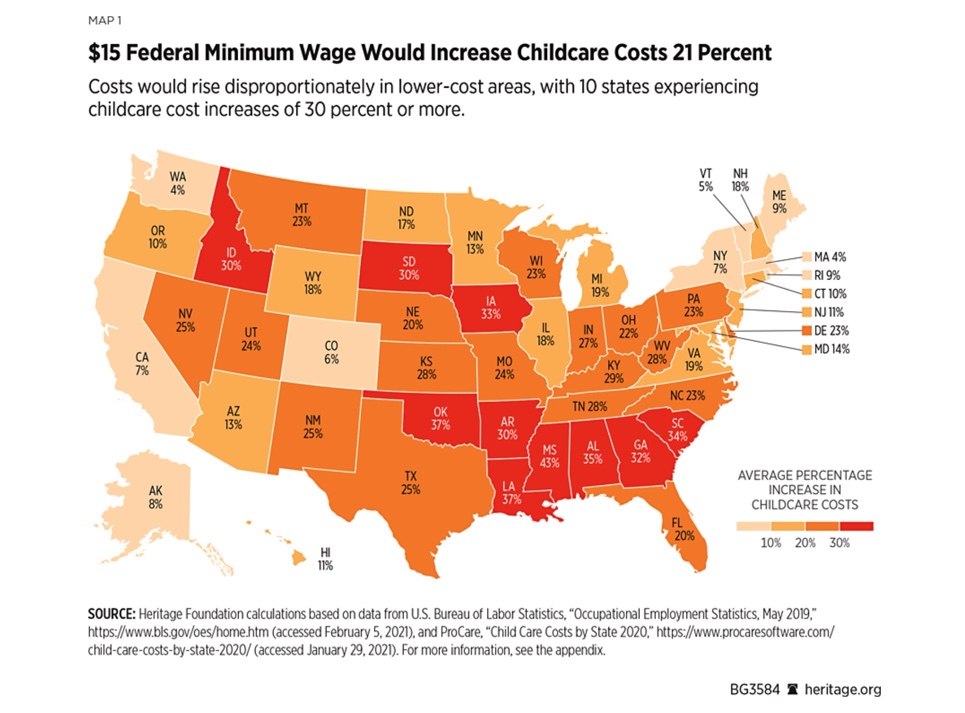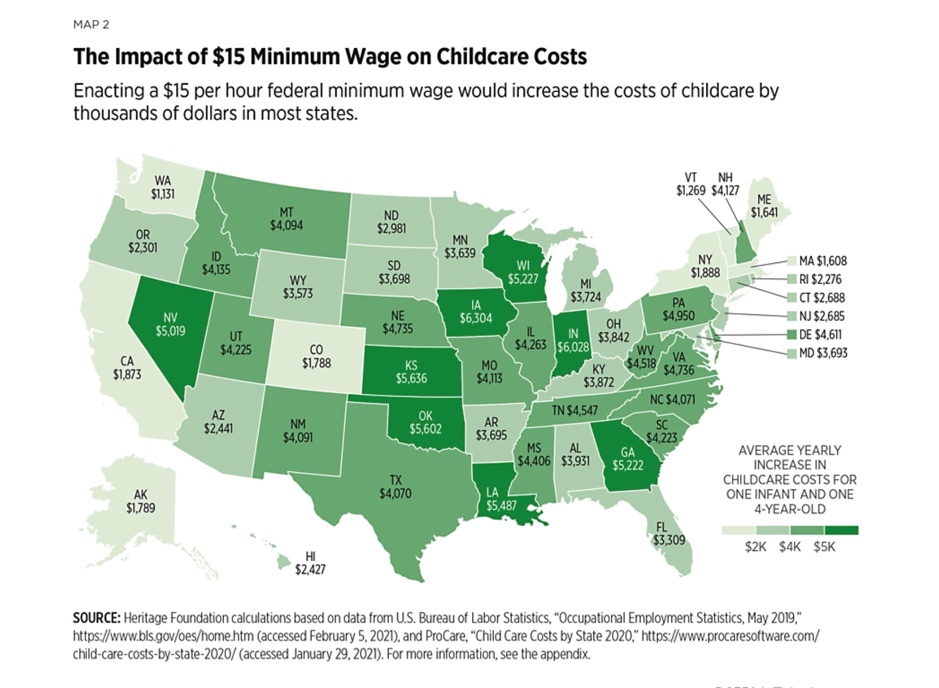A $15 minimum wage would also raise childcare prices
One of the biggest issues associated with the childcare industry is low wages. This is highly due to the economics of the market –– childcare is labor-intensive, therefore providers have no leeway to improve productivity in order to save costs or increase profits.
To this issue a lot of proposals have been suggested, one of the most common ones being raising the minimum wage. In fact, just recently, the Economic Policy Institute released a report calling for a $15 minimum wage. The report claims that “if the federal minimum wage is gradually increased from $7.25 per hour to $15 per hour by 2025, roughly 560,000 workers in the child-care sector will benefit.”
There are a lot of drawbacks associated with a minimum wage hike itself. For one, employers usually respond by either raising prices, cutting worker hours, laying off workers, or reducing future hires. A CBO report came out estimating that a federal minimum wage of $15 would lead to a loss of 1.4 million jobs.
When it comes to childcare itself, the effects are not different. Indeed, wages are low in the childcare industry, but a minimum wage hike is not without its costs. In a report, the Heritage Foundation found that, on average, childcare costs would increase by 21 percent nationally.

As the report explains,
Mandating that all childcare workers receive at least $15 per hour would result in significant cost increases for childcare providers. With childcare regulations limiting childcare providers’ ability to reduce other expenditures, higher costs would be passed on to families through significant childcare price increases.
The median wage for childcare workers across the U.S. is $11.65 per hour.5
Thus, a $15 minimum wage would require a majority of childcare workers to receive significant wage increases. Using wage distribution data from the Bureau of Labor Statistics’ Occupational Employment Statistics, I estimate that a $15 minimum wage would require an average increase of 29 percent in the wages of childcare workers across the 50 states. This does not include additional Federal Insurance Contribution Act (FICA) taxes and other potential costs that employers would be required to pay along with higher wages.
A breakdown of childcare provider costs from the Center for American Progress estimates that employee costs account for between 60 percent and 80 percent of childcare providers’ operating expenses. Wages likely consume an even higher share of in-home providers’ expenses, and virtually the entirety of nanny care costs. Assuming that wages account for 70 percent of childcare providers’ expenses, the average percentage increase in costs across the states would equal 21 percent. This would bring the average cost of infant care from $11,193 to $13,250, and the average cost of care for a four-year-old from $8,959 to $10,630
For Minnesota, childcare costs would increase by about $3,600.

While high childcare costs hurt parents, they disproportionately affect low-income, the same people the policy is intended to help. Minimum wage hikes sound good and easy, but there are meaningful ways to raise incomes among the working populations.
And more importantly, there are more meaningful ways to solve childcare issues without burdening parents with and providers with higher costs.